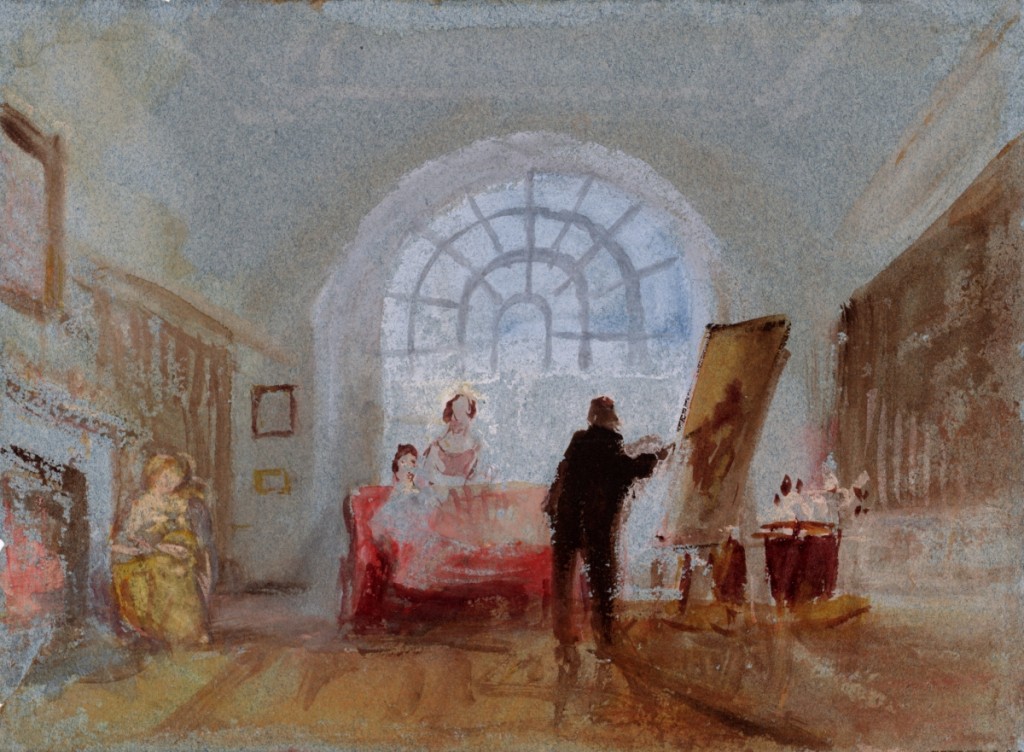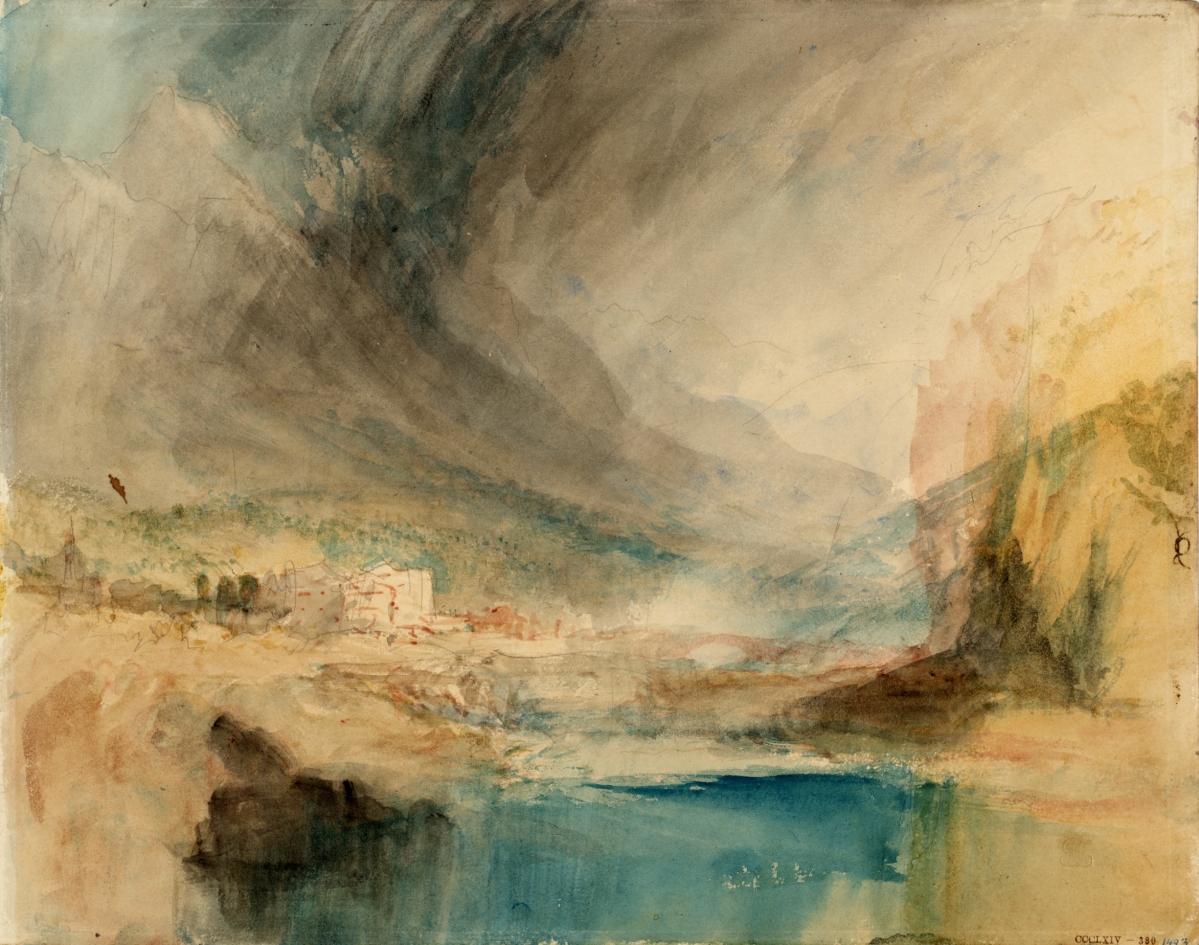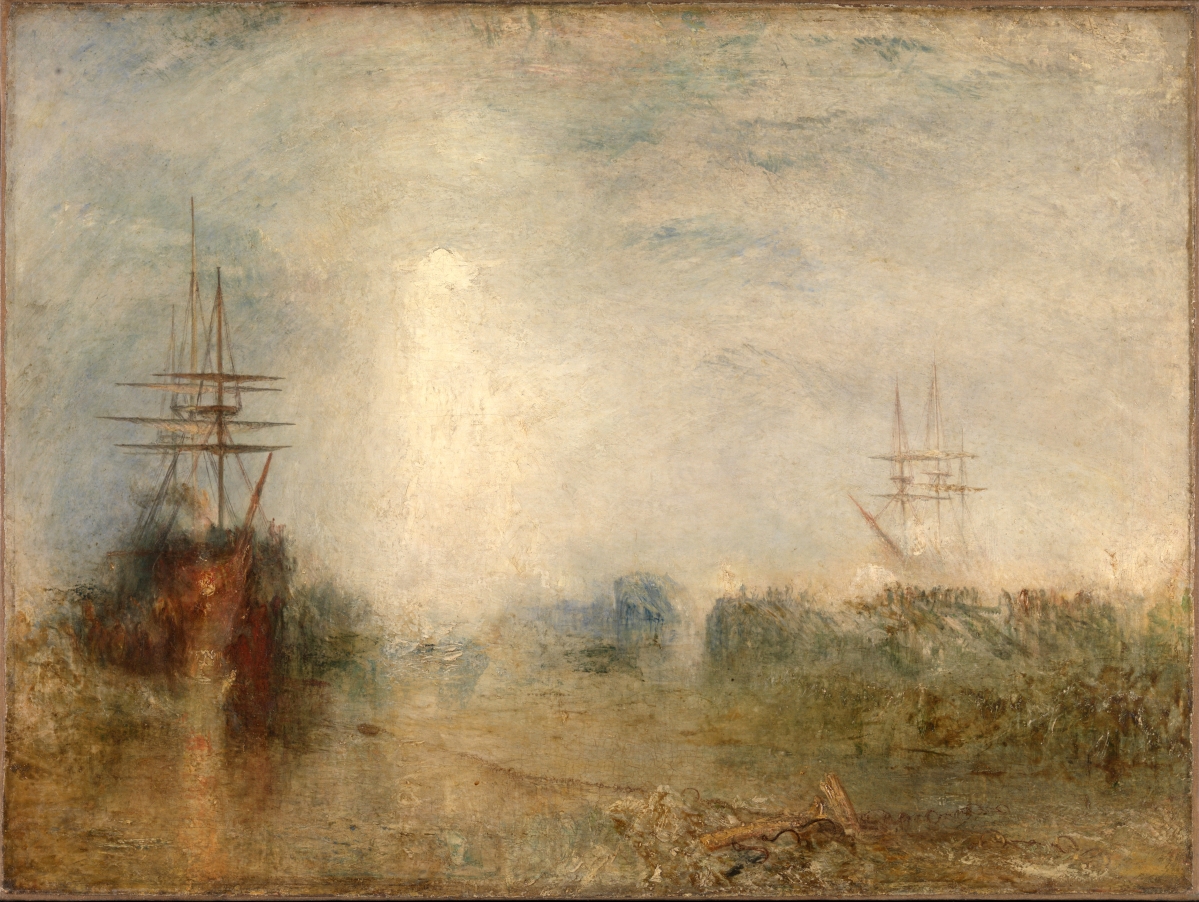By Kristin Nord
MYSTIC, CONN. – With the opening of the 5,000-square-foot Collins Gallery, a jewel tucked in the Mystic Seaport Museum’s Thompson Exhibition Building, the institution launched what its trustees have declared an “Era of Exhibitions.” And beginning this month and running through February 23, it will burnish its growing reputation with what promises to be an extraordinary exhibition of watercolors by J.M.W. Turner, Britain’s apex painter.
“J.M.W. Turner: Watercolors from Tate,” is a joint Mystic/Tate Britain collaboration, shepherded by Nicholas R. Bell, Mystic’s peripatetic senior vice president for curatorial affairs, and curated by David Blayney Brown, the Tate’s Manton senior curator of British art 1790-1850. Mystic will be its only North American venue.
It would seem almost preordained that this Turner exhibit will keep the normally sleepy town hopping this winter. What better way to do that than to introduce visitors to treasures culled from the Turner Bequest, a behemoth at the Tate, existing as a museum within a museum.
Brown, who has devoted his professional lifetime to the conservation and study of the works in this bequest, selected 92 watercolors, four oil paintings and one of the artist’s last sketchbooks from a collection of more than 30,000 works on paper, 300 oil paintings, and 280 sketchbooks.
“It is a sobering thought that the immense treasure of watercolors, drawings and sketchbooks that forms part of the Turner Bequest Tate Britain would not survive if Turner himself had anything to do with it,” Brown writes. “If enacted as he intended, his legacy would have consisted of just a hundred finished oil paintings and no works on paper at all. That it does not, and is instead such an extraordinary showcase for his genius as a draughtsman and his mastery of the medium of watercolor above all, is due to the independent minds of the Chancery Court who, in 1856, ruled that the entire contents of his studio should belong to the nation.”
 For the Mystic exhibition Brown has selected landscapes, seascapes, architectural and topographical sketches, as well as travel drawings and a number of intimate interior views. There are rarely viewed watercolors that Turner completed in the studio as well as sketched en plain air; the earliest was executed when Turner was 17 years old, and the last when he exhibited at the Royal Academy just five years before his death in 1851.
For the Mystic exhibition Brown has selected landscapes, seascapes, architectural and topographical sketches, as well as travel drawings and a number of intimate interior views. There are rarely viewed watercolors that Turner completed in the studio as well as sketched en plain air; the earliest was executed when Turner was 17 years old, and the last when he exhibited at the Royal Academy just five years before his death in 1851.
In these works, one finds Turner’s approaches were unorthodox, to say the least – whether using his elongated thumbnail as a claw, applying oil-like substances to his watercolors, or watercolor to his oil paintings. Turner experimented vigorously, and mixed media “all the time,” Brown said.
“He wasn’t really concerned about whether this was normal practice or anything you’d recommend to anybody else or not. His eye was always on the eventual effect.”
An inveterate traveler, Turner rarely left home without the tools of his trade – a rolled-up, loose bound sketchbook, pencils and a small traveling case of watercolors. His annual tours generally were undertaken in anticipation of, or as a response to, commissions for topographical illustrations and prints. Such projects continued well into the 1830s, along with excursions aimed at collecting material for watercolor collectors. His sketchbooks, in this context, served in effect as his reference library, and his travels generated many significant drawings.
Some magnificent works on display include “Shields Lighthouse,” circa 1823-36, “Arundel Castle on the River Arun,” circa 1824; and “Venice: Looking across the Lagoon at Sunset,” 1840.
Other sketches served as historic markers as well, whether it was his depiction of “The Funeral of Sir Thomas Lawrence, A Sketch from Memory,” 1830, or selective scenes from Petworth House, the estate of one of his major benefactors, George Wyndham, Third Earl of Egremont.
“Here we see not the public Turner, whose large oil paintings hung prominently in the Royal Academy, but the private artist who continually tested compositions, color and tactile effect,” Brown said.
And it is this artist, laboring and experimenting, Nicholas Bell said, that he is particularly drawn to.
“There is something profoundly naked about watercolor. You cannot fake it. And it’s there, it’s all exposed for you to understand exactly what is going on. And I think that these works in particular…the works that he kept for private study and for reference, reveal more of the man than a lot of the work that’s public,” he said.
In a final portion of the exhibition, curated specifically with Mystic in mind and titled “Turner and The Sea,” the artist ventures into apocalyptic territory. He was reported to have said that he “has no settled process but drives the colors about till he has expressed the ideas of his mind.”
His ports and harbors are disquieting places, and his seas are often home to shipwrecks, stranded vessels and casualties of the slave and whaling trades. Amy Concannon, an art historian who also works directly with the Turner Bequest at Tate Britain, notes additionally that “we’ve now become used to the unfinished works, but they would have been quite shocking to his contemporaries.”
Concannon was among a robust roster of scholars and working contemporary artists that Bell approached to discuss Turner’s work, methods and vision in Conversations with Turner: The Watercolors (SKIRA, 2019). Bell served as editor.
Another was Victoria Pomery, OBE, the founding director of Turner Contemporary in Margate, a gallery which is situated on the actual site of Turner’s mistress, Sophia Booth’s, former rooming house in the little seaside town.
“Margate was incredibly important to Turner, and the quality of the light and his time here was, I think, very inspirational,” she said.
“Quite often people will visit who have never been to a museum or gallery in their lives. We’ve found with people coming new to art that they can really get an essence of what Turner is, because Turner’s work is very much about place – his sense of place is really important. And here, we have the advantage of looking out on the very views that Turner painted.
“Turner really exemplifies the difference between the picturesque and the sublime,” she continued. “His paintings are messy and imperfect. There’s a strange sense to them that the frame is almost arbitrary – as though the painting could just continue on indefinitely.”
The British-born conceptual artist Ellen Harvey whole-heartedly agrees. “He just wasn’t interested in the carefully staged foreground with the fluffy sheep and shepherdesses and receding planes ended with a charming ruin silhouetted against a nicely beclouded sky.” Indeed, Harvey relishes the ways in which Turner “punches right out of the frame of the picturesque convention of his day.”

“Whalers (Boiling Blubber) Entangled In Flaw Ice, Endeavoring To Extricate Themselves” by J.M.W. Turner, exhibited 1846. Oil paint on canvas.
The Ghanian-British filmmaker John Akomfrah grew up just a short 15-minute walk from the Tate, and told Bell that he has been keeping Turner company, so to speak, since he was a teenager. In recent years his films have delved into the attraction and horror of the sea, as well as the role it plays throughout history in global migration.
“Although Turner never crossed an ocean, and his understanding of the forces of the sea are primarily coastal – he is also speaking of the light of the sublime – the transience of light,” he says.
“The minute you understand the transience of light, you’re also then tapping into the transience of temporality itself. If light is only there momentarily, then so, too, the space of mortality. And I think that people intuited this. I think they got it.”
Ultimately, there are many enigmatic aspects to Turner the man, the artist, the scientist, the philosopher. There is the ease with which he moved within the highly stratified British society and savored conversations with his aristocratic clients. There is the cockney accent he maintained throughout his life, which bespoke of his station as the son of a barber/wigmaker. And there is the brilliant businessman, whose scruffy clothes belied his accrual of significant wealth.
“In a way, he sits between two models of artistic operation – the courtly, patron-based aristocratic world of the Baroque or Early Modern era, and then the completely ‘marketized’ world of art dealers, exhibitions, copyright fees and biennales that came in as the dominant mode just after his death,” notes Timothy Barringer, the Paul Mellon professor of the history of art at Yale. So, he’s a modern man, but he’s also an early modern man.”
Remarkably, Bell noted in the catalog’s introduction that it has been more than 50 years since “A Wreck,” circa 1834, and “Venice: Looking Across the Lagoon at Sunset,” 1840, traveled to New York “in support of MoMA’s exhibition ‘challenging the mandarins of Modernism and Abstraction.'” All the more reason to catch this exhibition, Bell said, “to wallow in Turner’s glory.”
Visitors to the Mystic Seaport campus over the coming months will have a number of ways to further immerse themselves in Turner’s work and legacy, whether it’s a Turner and Tea session with scholars and artists; a British pub night or hands-on workshops in watercolor, offered in collaboration with the Mystic Art Association. Coincidentally, just a half-hour’s drive away, “Unto This Last: Two Hundred Years of John Ruskin,” will be running through December 8 at the Yale Center for British Art in New Haven. This major exhibition is examining the writings and enduring influence of the great British critic of art, architecture and society, who was Turner’s indefatigable champion.
The Mystic Seaport Museum is at 75 Greenmanville Avenue, open from 9 am to 5 pm daily. For additional information, www.mysticseaport.org or 860-572-0711.
All photos – Tate: Accepted by the nation as part of the Turner Bequest 1856 ©Tate 2019.



















